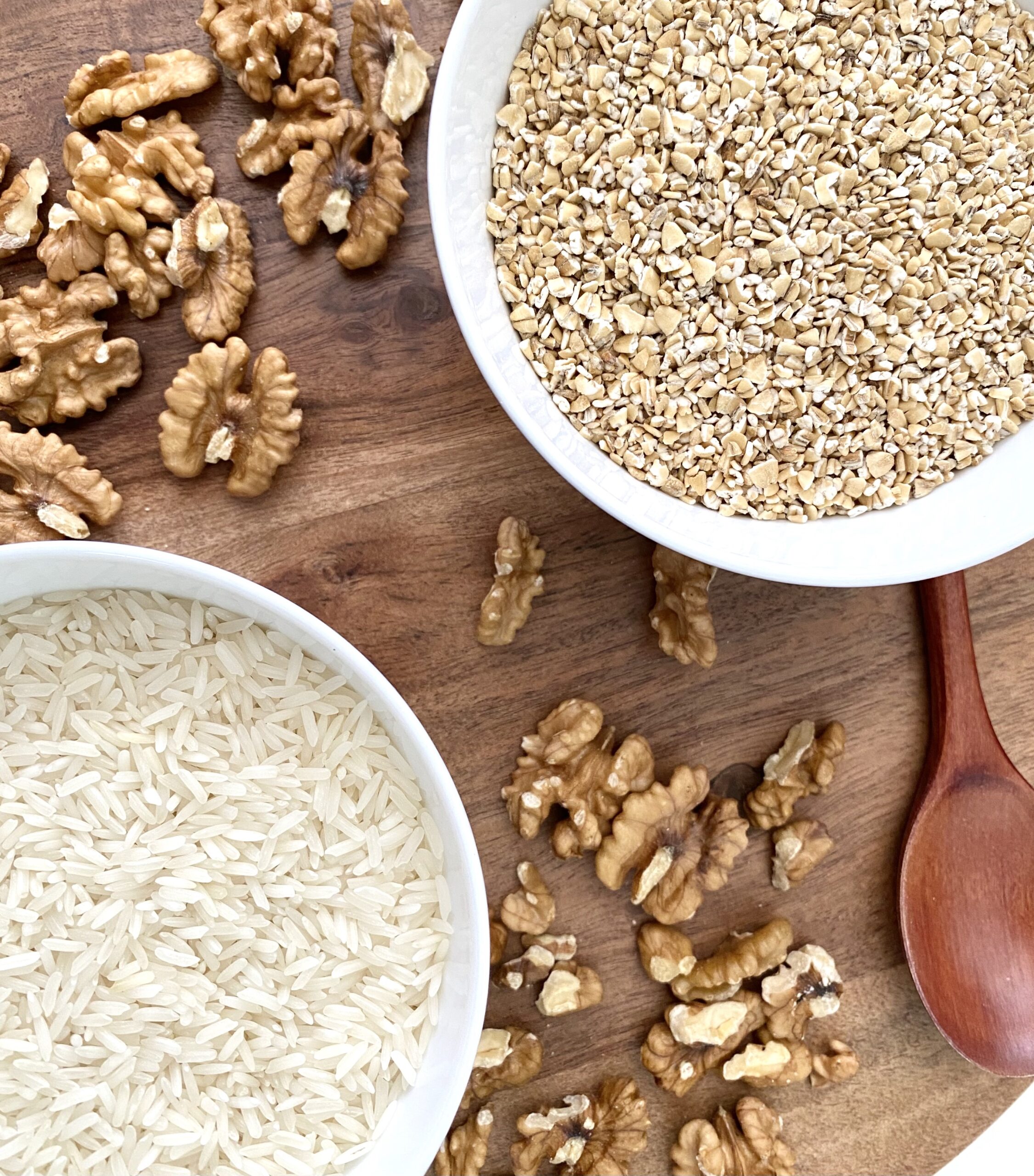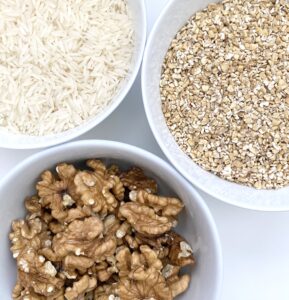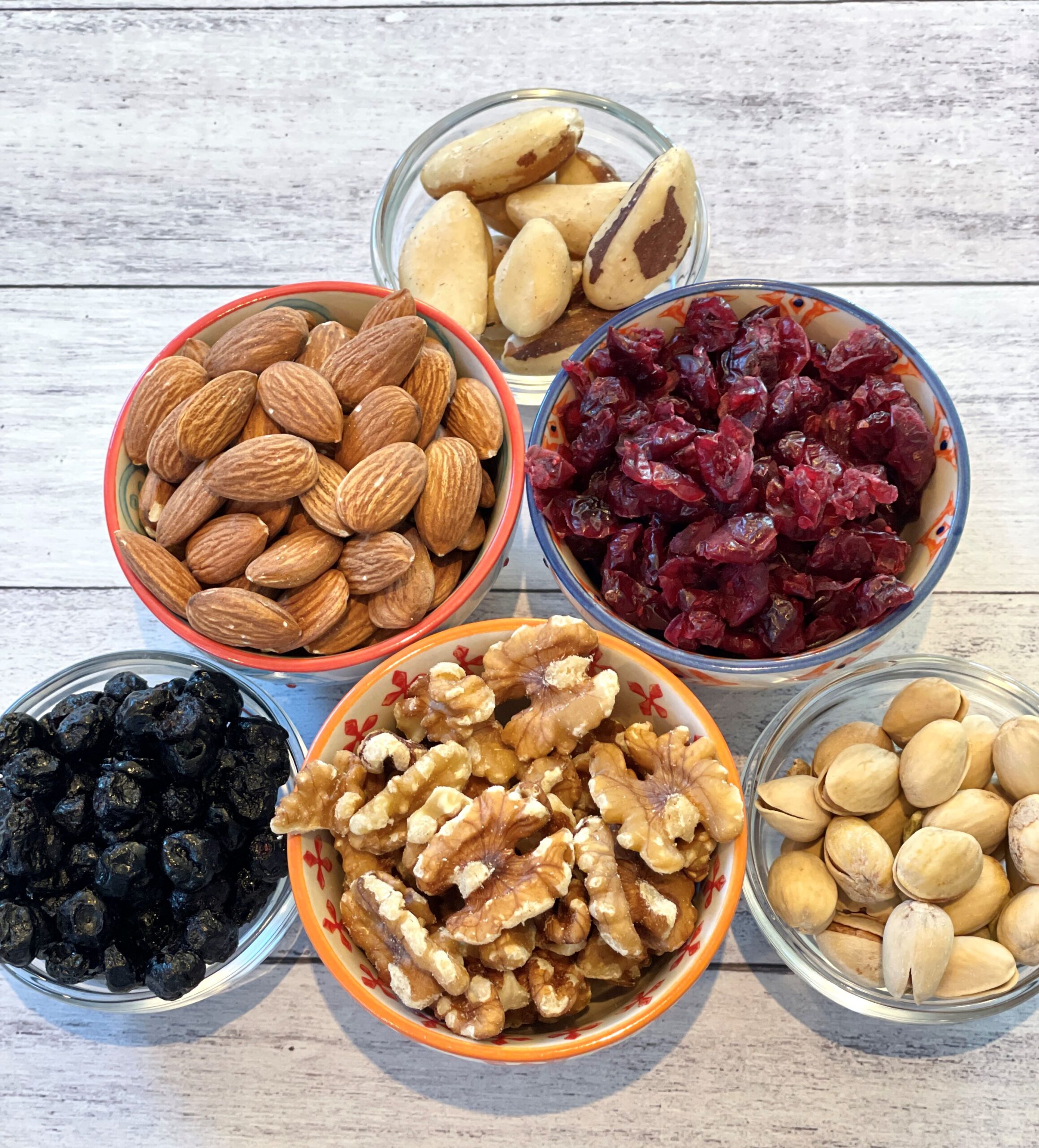10 Steps for Eating More Sustainably

It’s National Nutrition Month and a hot topic right now is on sustainability in our everyday lives. Besides keeping the faucets and lights off when you’re not using them, there are an immaculate number of ways to be more sustainable in all steps regarding nutrition, from grocery shopping to post-consumer waste. Here are 10 Steps for Eating More Sustainably that you’ll want to start practicing ASAP. Let’s celebrate our Fuel for the Future by Eating for Sustainability.
- When eating at restaurants, be mindful of portion sizes. We all eat out when there are special occasions or maybe it happens more regularly. Consider sharing 2 dishes among 3 people to reduce the amount of leftovers after the meal. If that is not a possibility, ask for a takeout box to take the leftovers home and save it for later.
Pro-Tip: Go a step further and bring your own tupperware for the leftovers. This way, you won’t have to deal with disposing of single-use takeout containers.
- Plan your meals ahead of time and make a grocery list to reduce food waste. Planning your meals and creating a grocery list will let you get what you need without being tempted to add anything extra to your cart. This saves time, because you don’t spend your time dwelling in the aisles wondering if you should get banana chips as a snack. Being prepared also helps with portioning out your meal sizes and being more consistent if you’re following a specific diet to reach your health goals. It is also more efficient because you know exactly what you need to buy.
- Bring your own bag. Reduce the use of plastic and the extra steps of composting/recycling paper bags. I personally have a growing collection of tote bags that I love to show off whenever I’m out grocery shopping. It’s a total fashion statement! It shows that you are being mindful of reducing single-use plastic usage and working towards helping the environment. If you’re looking for more ways to reduce plastic, check out our past post on Ways to Reduce Plastic at the Farmers Market and the Grocery Store.
- Consider walking to the grocery store with friends and/or family. You’ll save money on gas and reduce your carbon footprint. It’s also a great opportunity to get your steps in for the day or get a great full body workout when carrying your groceries back home. However, if the grocery store is too far, or you plan on going to a wholesale store like Costco, it cannot be helped that you have to drive. But don’t worry! There are other ways to be sustainable. I love inviting my friends and/or family to go grocery shopping with me, because I get to spend quality time with them while still being productive in my busy work schedule. Carpooling works, too, to reduce emissions.

- Buy groceries in bulk. Talk to your friends and family to see if they need anything so that you can grab everything all at once. This saves time and money, and it gives you reason to go talk to the people you care about in person when you deliver the groceries. Buying in bulk can also reduce packaging waste.
- Buy your produce from the farmers market. You can build connections with the people there and learn the antics of bargaining. The farmers market also does not pre-package food like they do at the grocery store, so you can purchase produce without having to worry about how you’re going to dispose of the packaging later. Check out this past post on Farmers Market Adventures and How to Find Them.
- Prep your foods and store them in reusable containers. Plan and prep your food for the week over the weekend. Put the prepped food into reusable containers and store them in your fridge. This will save time during the week and you will have easy-to-heat/make meals.
- Repurpose your food waste. We all have trimmings or parts of food that are no longer edible. You can use those food scraps to fertilize plants in your garden (if you have one). If you have pets or raise farm animals, you can use the scraps to feed them. IF the food scraps are still good to use, put them in a container in your freezer to use in a stock/broth at a later date. Or you can use fruit that is about to go south in a smoothie. Just put it in your freezer and take it out when needed.
For more tips on repurposing food waste, check out: Creative Ways to Use Food Scraps and Reduce Waste and Dietitian Approved Recipes Using Leftover Foods.
- Compost the food scraps that you cannot eat or repurpose. When it comes to the trimmings or leftover foods that no longer have an immediate use, you can always compost it. Just make sure you check the composting rules for your location. If your area uses Recology, check out this page for how to sort your trash. For tips on how to compost effectively, read The Secret to Successful Composting.
- Save the leftovers for another meal. I think this is one of the best parts about cooking larger portions. I don’t have to think about what I’m going to eat for lunch tomorrow. By finishing all the food that you’ve spent so much effort in cooking, you can truly be thankful for the nourishment it provides you. Just be careful not to have too many leftovers to the point where you’re eating the same dish every day. I’ve been there, and it’s not fun to eat smoked salmon over rice for the 4th day in a row.
Start Small! Every mini change we do matters. Pick 1 or 2 of these tips and start to implement it into your routine. Over time, it will become more habitual. You can always add another tip, as desired. If we all work together and do at least 1 mini change, we will be working towards a more sustainable Earth.
Check out past posts on sustainability:
Ways to Reduce Plastic at the Farmers Market and the Grocery Store
Creative Ways to Use Food Scraps and Reduce Waste
Dietitian Approved Recipes Using Leftover Foods
The Secret to Successful Home Composting
By Brittney Dare, dietetic intern
Recent Posts
Get 10 Must-Have Protein-Rich Powerhouse Snacks
These will fuel and satiate you.
You’ll also get access to my newsletter for the latest recipes, health tips, and exclusive offerings.


